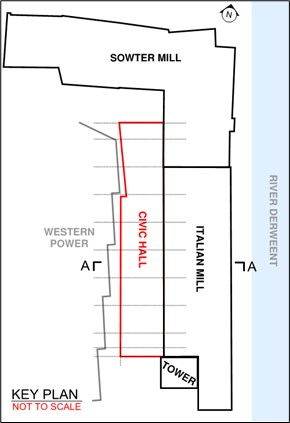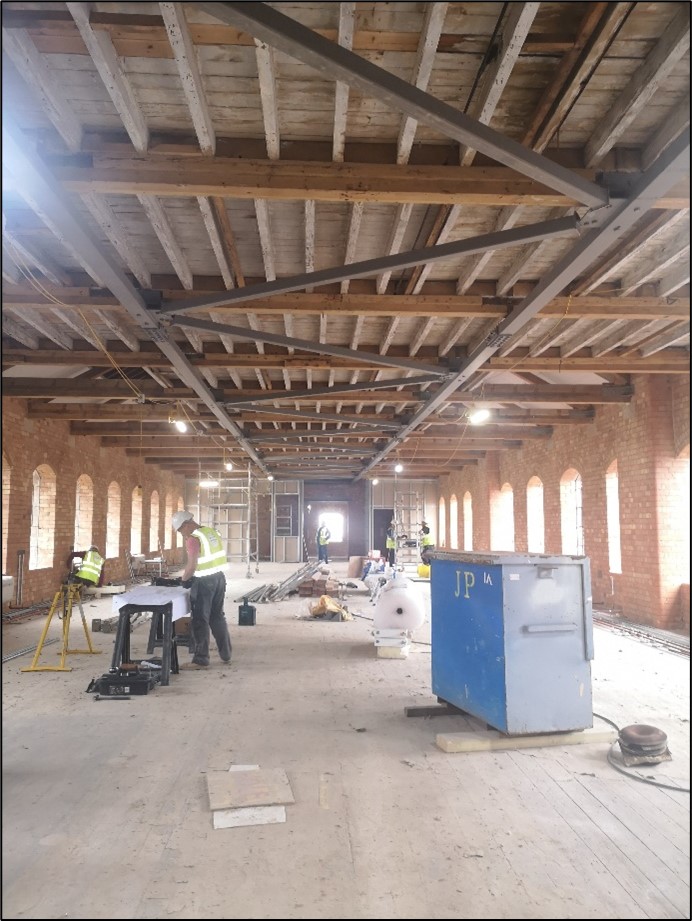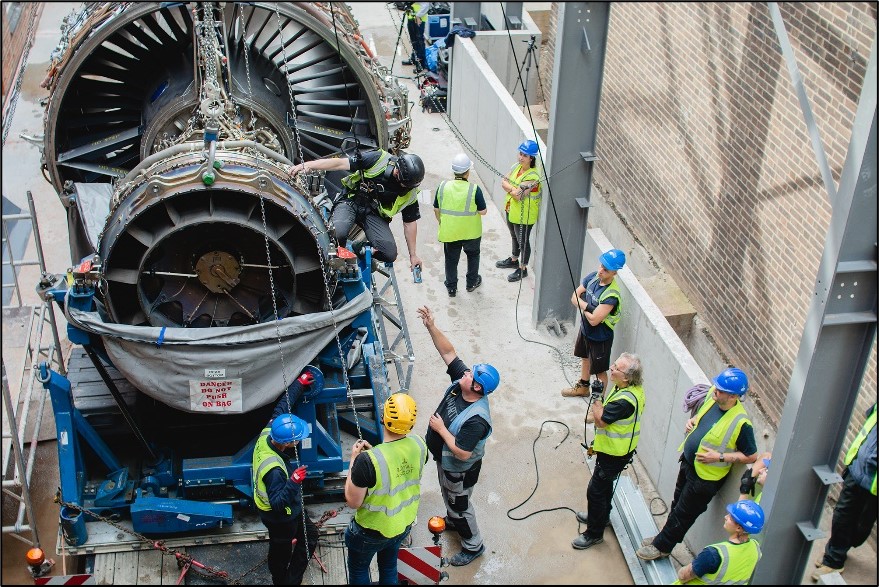A Hyper-Collaborative Project
A New, Influential Role for the Structural Engineer
THE SILK MILL - THE MUSEUM OF MAKING
In 2017, GCA Consulting Engineers and six other organisations formed an Alliance to transform the Silk Mill in Derby, site of the first factory in the world and part of the Derwent Valley Mills UNESCO World Heritage Site, into the Museum of Making.
The Alliance committed to working under an IPI (Integrated Project Insurance) contract, an innovative contract form that prizes collaboration - part of a Home Office pilot project into better procurement.
This award recognises the collaborative efforts of the entire team. All disciplines, including GCA as the Structural Engineers, had equal weight and influence on the project and our achievements should not be separated from the wider team.
Within this framework, GCA delivered innovative and ingenious Structural Design, and we have highlighted our individual achievements within the field of Structural Engineering.
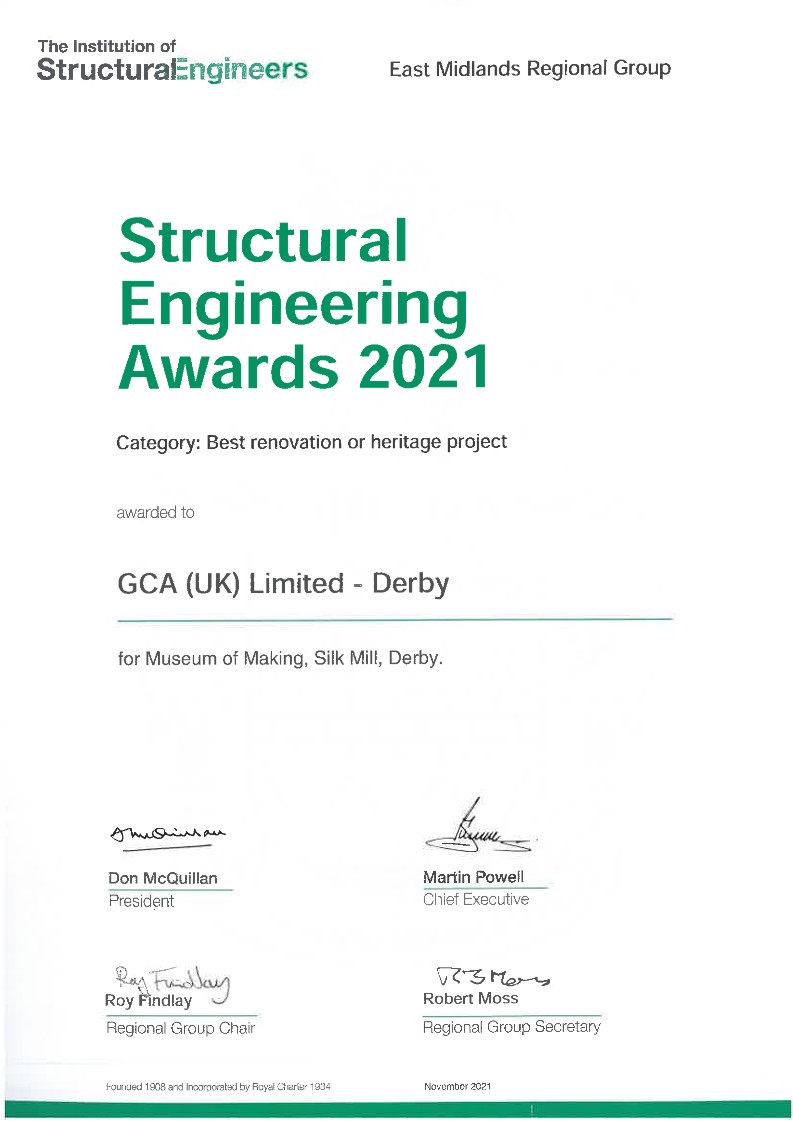
Key challenges:
- The Museum was to be formed by developing and extending a Grade II listed building [site plan, left].
- The ground below the Atrium extension (Civic Hall) to the West was an infilled mill fleam (watercourse), which contained contaminated ground, asbestos, and was the site of Western Power’s main incoming power supply to the city.
- The site was in a flood plane, and required flood resilient design including addressing potential flotation of ground floor slabs.
- The last twelve months of the project coincided with national lockdowns and global supply challenges due to the Covid-19 pandemic.
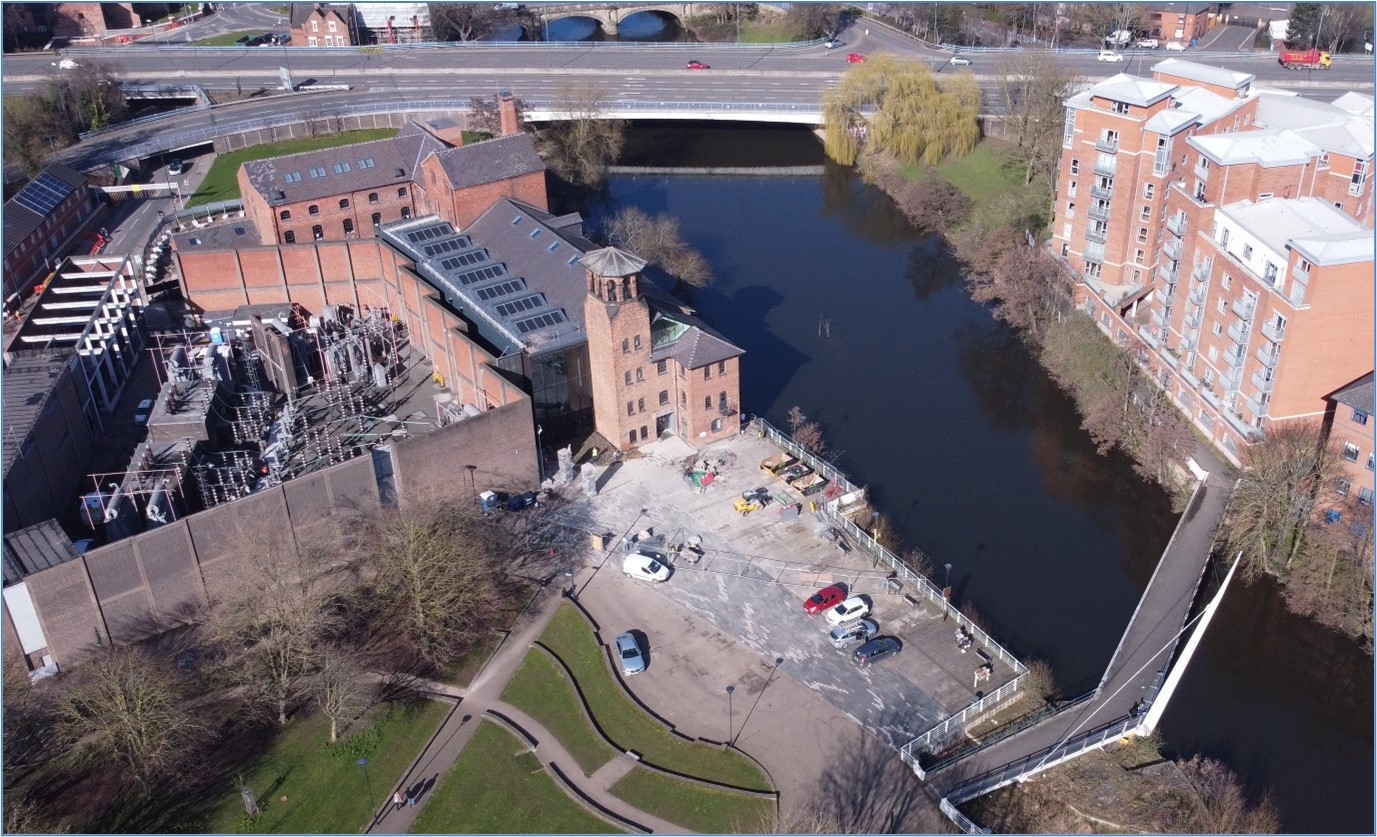
Sustainability:
In line with circular economy principles, the project sought to repurpose an original mill building for a new cultural attraction. The 2012 IStructE report: “The Value of Structural Engineering to Sustainable Construction” noted the potential for the structural engineer to have a broader influence on sustainable design.
The collaborative nature of the contract form enabled GCA to influence the sustainability of the design from the outset. A good example of our approach comes from the retention of existing floors. Another engineer had recommended removal of the floors as ‘inadequate for museum loads’. The existing floors comprised a ‘screeded’ concrete slab, and although we understood the initial engineering assessment which discounted the screed, we believed it had adequate interaction with the slab to allow a greater effective slab depth.
The Alliance structure gave GCA sufficient influence to push for the retention of the floors. We persuaded the Alliance to invest £25,000 in coring, and eventually load testing. Following our advocacy, the Architectural, M+E, Structural and Construction challenges of retention were overcome and GCA oversaw a load test that proved the existing floor structures adequate for Museum loading criteria.
Our approach saved over £100,000, as well as time, carbon and the historic value of floors which would otherwise have been lost.
Impact on Society:
As well as being a national museum promoting the ingenuity of makers, the project had a positive impact on local people through the creation of opportunities for interested members of the public to volunteer, from being involved directly in design workshops to cleaning bricks and supporting the construction process. This built engagement and taught skills.
Embodied Carbon:
GCA assessed the embodied carbon of the structure in accordance with The Institution of Structural Engineers Embodied Carbon Guide. GCA’s ingenuity and creativity saved 47 tonnes of embodied carbon through retention of the first and second floors.
Creativity and innovation:
GCA, as part of the Alliance Board, developed processes and principles to administer the novel form of contract (IPI). We dealt with key challenges, such as the discovery of significant quantities of asbestos below the ground floor, without adversarial behaviour, leading decisions making where our Engineering skills could add value. When asbestos was found, we proposed an oversailing new floor slab, encapsulating the asbestos, and worked through the consequent Architectural and cost challenges of an increased ground floor level by engaging the entire design team as well as the Contractor and Client.
GCA consistently found ‘best for project’ solutions which helped to manage the project budget. GCA ensured that we understood the aims and ambitions of the project, the client’s strategic brief, and the aims of other individual disciplines. For example we considered the impact on the efficient, low-carbon, naturally ventilated M+E solution in our design of exposed floor soffits.
Technology:
GCA found creative solutions through new technology in the use of robotic wheeled drones to access the undercroft of the original Mill to enable a detailed structural inspection. GCA thought it likely a suitable technology existed, and found a supplier to carry out the work. GCA worked closely with them to obtain information which enabled us to make better design decisions.
Elegance and good detailing:
GCA took the opportunity of a more porous design process, without traditional silos of responsibility, to influence the aesthetic impact of the building, e.g. making suggestions for revisions to the appearance of the main Atrium roof which were adopted and taken forward by the Architect.
Our designs were constantly conscious of the visual impact of the structure. In the design of the Atrium steelwork we installed a new truss within the existing building floor which enabled wind loads on the Atrium to be transferred to the existing building, avoiding the use of heavy cantilevered columns (and the high carbon cost of the associated substructure) or a portalised frame which would have disrupted the rhythm of the existing listed building façade.
Our attention to aesthetic sense and detail retained large elements of structure on show, for example a new wind truss [Left] to the second floor, left uncovered by the Architect once installed as an exemplar within the Museum of real world ‘Making’.
Value:
GCA created significant financial value for the project through our innovation in structural design. Our programme of load testing enabled retention of the first and second floors, saving £100,000. To achieve this we commissioned physical testing, made engineering judgements, and followed up with detailed calculations and led a programme of load testing, monitoring the structure closely during the works.
Our oversailing Ground Floor, encapsulating asbestos, saved £200,000. To achieve this we worked with the entire design team to assess the cost implications, assessed the impact on flood mitigation measures throughout the buildings and considered the aesthetic value of the existing historic building floor-to-ceiling heights.
Our proposals for a ground-bearing, rather than suspended floors in the Atrium saved £25,000. To achieve this we proposed specific ground investigations to make an engineering judgement on ground capacity, worked with the Architect to develop flexible finishes to minimise the risk of cracking and overcame a Western Power wayleave for future main electricity cables which ran through the area.
Other sources of value we avoid risks to site works by minimised excavation of asbestos-contaminated ground, we created wider social value by assessing and reducing the net carbon of our design, avoiding a suspended reinforced concrete structure and we created local social value through training and outreach of volunteers involved with the project.
Ease of constructability:
GCA assessed the constructability, cost, and alignment with the client’s brief at every stage, using the resources within the Alliance, for example getting direct cost input on optioneering when we considered potential innovations as noted above. Our engagement with the cost team meant that some of our ideas were quickly confirmed to be cost or carbon neutral, which meant we could put them to one side rather than pursuing them unnecessarily.
We directly influenced the project programme, working with the contractor to manage sequencing, for example the installation of an Aeroplane Engine exhibit early [above] so the building could be constructed around it. Our design repeatedly saved cost (see above), freeing up budget for improved delivery of the strategic objectives, for example a programme of artist engagement which ran alongside the main project.
Summary:
Our innovative engagement with the team, creative Structural Engineering solutions, and role as ‘designers’ as much as Structural Engineers has bought efficiency, robustness and delight to a fantastic new building. It has proved to the most satisfying and enjoyable projects we have worked on to date, despite the many challenges. We have created fantastic, ambitious spaces that have allowed the museum to exceed its ambitions for the project, and demonstrated a new model for the profession that puts Structural Engineering at the heart of design teams, as an equal collaborator.

